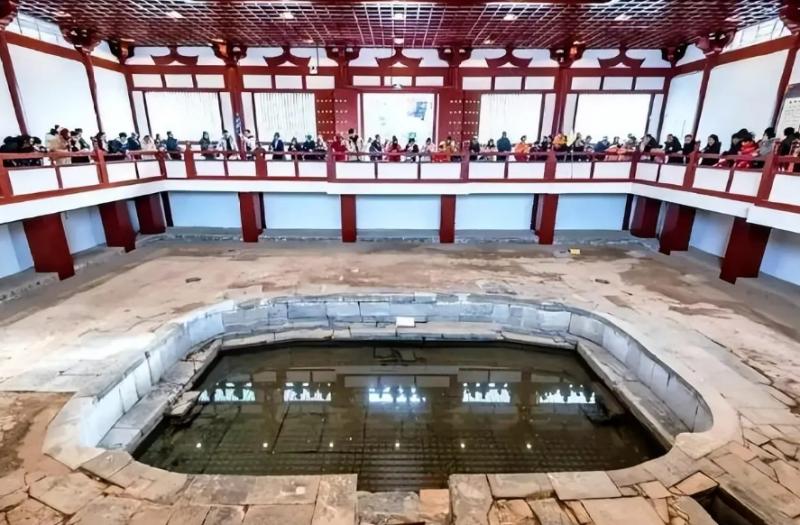Huaqing Pool

Xi'an: Huaqing Pool
Huaqing Pool, also known as Huaqing Palace, is located in Lintong District, Xi'an City, Shaanxi Province. It is a world-renowned ancient royal garden and hot spring resort, boasting a long history and splendid culture.
I. Historical Development
Zhou and Qin Dynasties: The Emergence of Hot Springs
- Huaqing Pool's hot spring resources were discovered as early as the Zhou and Qin Dynasties and used for royal health and sacrifice rituals.
- Legend has it that Qin Shi Huang bathed here and left behind the name "Lishan Hot Spring".
Tang Dynasty Prosperity: Royal Garden
- In the first year of Emperor Xuanzong's reign (713 AD), Huaqing Palace was built as a place for summer retreat and hot spring therapy.
- Through successive expansions, Huaqing Palace became a grand and magnificent royal garden, featuring hot spring pools, palaces, halls, pavilions, and other numerous structures.
- Huaqing Palace is also the birthplace of the love story between Emperor Xuanzong and Yang Guifei, with famous structures like "Hot Spring Palace" and "Longevity Palace" associated with this legendary love affair.
Song, Yuan, Ming, and Qing Dynasties: Rise and Fall
- Throughout the Song, Yuan, Ming, and Qing Dynasties, Huaqing Palace experienced periods of rise and fall, undergoing several renovations, but its status and influence remained undiminished.
Modern Period: Destruction
- In modern times, Huaqing Palace suffered from wartime and man-made damage, resulting in the destruction of some buildings and a degree of damage to hot spring resources.
Modern Revival: Cultural Legacy
- Since the 1970s, Huaqing Palace has undergone large-scale restoration and reconstruction, gradually regaining its former glory.
- Today, Huaqing Palace is a national 5A-level tourist attraction, drawing visitors from all over the world, becoming one of the representatives of Chinese ancient culture.
II. Architectural Landscape
Hot Spring Pools:
- The core landscape of Huaqing Pool, featuring nine hot spring pools, each with a unique name and function, such as "Five-Room Hot Spring Pool" and "Crabapple Hot Spring Pool".
- The hot spring water is rich in various minerals and has excellent health benefits, making it a crucial location for ancient royal health preservation.
- The surrounding landscape of the hot spring pools is exquisite and elegant, blending with the natural environment, showcasing the unique style of Tang Dynasty architecture.
Palaces:
- The palace is the emperor's residence in Huaqing Pool, serving as a place for him to conduct government affairs and rest.
- The palace architecture is exquisite and its layout is rational, reflecting the grandeur and luxury of Tang Dynasty royal architecture.
- Among them, the most famous is "Longevity Palace", said to be the place where Emperor Xuanzong met with Yang Guifei.
Halls:
- Huaqing Pool boasts numerous halls, such as "Nine Dragon Pool Hall" and "Yuzhen Hall", representing Tang Dynasty palace architecture.
- These halls are grand in scale and beautifully decorated, showcasing the brilliant achievements of Tang Dynasty architecture.
Pavilions and Towers:
- Huaqing Pool is dotted with numerous pavilions and towers, such as "Looking at Immortals Pavilion" and "Embracing Wind Pavilion", adding a touch of poetic charm to the site.
- These pavilions and towers cleverly utilize the terrain, blending with the surrounding environment, displaying the exquisite design of ancient Chinese architecture.
III. Cultural Connotations
Hot Spring Culture:
- Huaqing Pool's hot spring resources are an essential part of Chinese hot spring culture, with a long history and profound cultural accumulation.
- Hot springs not only have health benefits but are also imbued with cultural meanings of auspiciousness, longevity, and more.
Love Culture:
- The love story of Emperor Xuanzong and Yang Guifei has transformed Huaqing Pool into a sacred place for love, drawing countless couples to seek blessings and make wishes.
- Structures like "Longevity Palace" have become symbols of love culture, adding a romantic touch to Huaqing Pool.
Political Culture:
- As the ancient royal palace, Huaqing Pool is closely intertwined with political culture.
- Historically, many significant events occurred here, such as "Hot Spring Palace", the site of the An Lushan Rebellion.
- Huaqing Pool has witnessed the shifts in the political landscape of ancient China, reflecting the evolution of ancient Chinese political culture.
IV. Tourism Value
Historical and Cultural Value:
- Huaqing Pool boasts abundant historical and cultural resources, serving as a vital location to understand ancient Chinese culture.
- It preserves precious relics from the Tang Dynasty, including palaces, hot spring pools, and residences, alongside numerous historical stories and legends.
Natural Landscape Value:
- Huaqing Pool sits amidst mountains and water, with a beautiful environment and unique natural scenery.
- The green pines on the mountain, coupled with the gurgling hot springs at the base, create a beautiful natural painting.
Entertainment and Leisure Value:
- Huaqing Pool offers diverse entertainment and leisure activities like hot springs, water play, and sightseeing, catering to the needs of visitors of all ages.
- It also provides a fantastic opportunity to connect with nature and unwind.
As a treasure of ancient Chinese culture, Huaqing Pool carries a long history and splendid culture, attracting visitors from all over the world. While experiencing hot spring culture, love culture, and political culture, visitors can also appreciate the exquisiteness of ancient Chinese architecture and the beauty of natural landscapes, gaining a unique tourism experience.